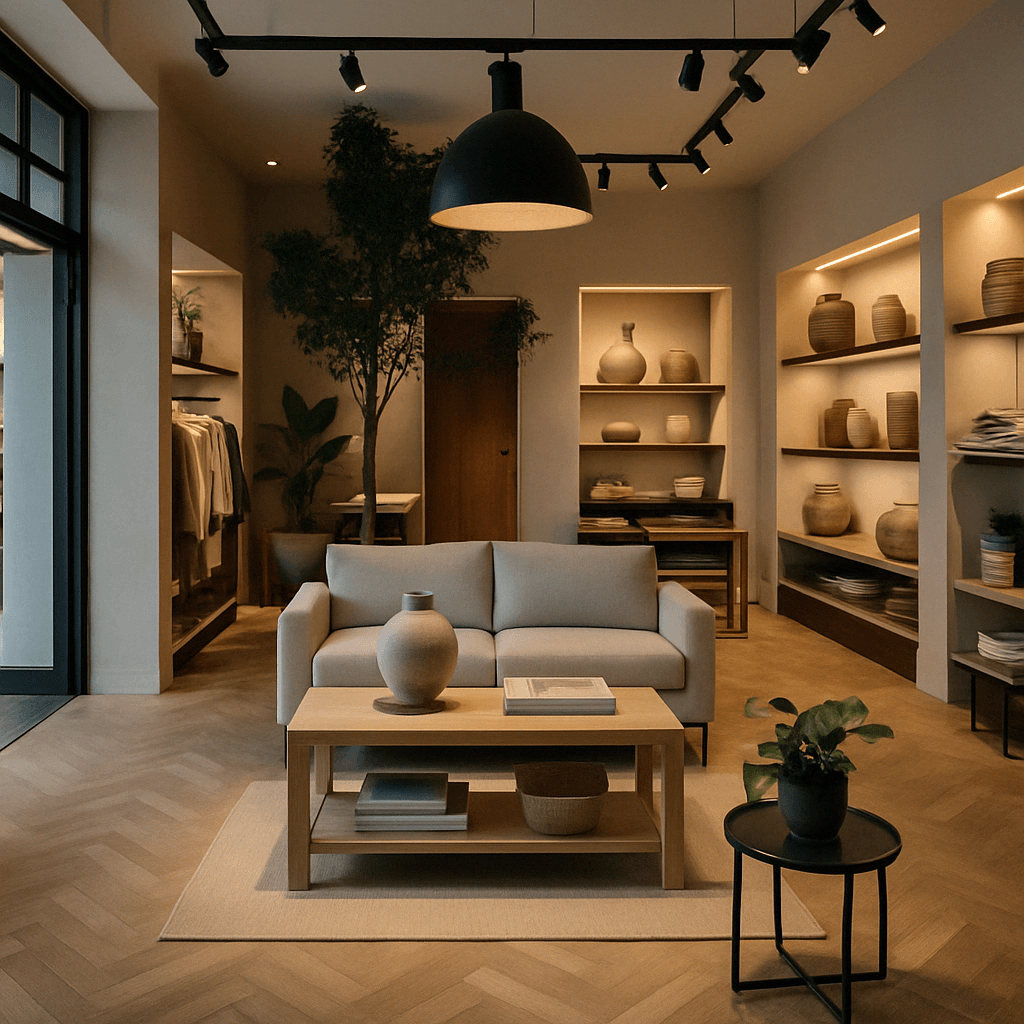
Store interior design: elevate your retail space with style
Store interior design is a strategic lever to boost a shop’s appeal, increase visitor time, and enhance the customer experience. In a context where physical retail must compete with e-commerce, offering an immersive, cohesive, and visually strong environment becomes essential. Every detail—from the storefront to the checkout—contributes to building a brand identity that captivates and converts.
Why interior design is crucial in a store
Smart layout is not just about aesthetics—it guides customer flow, highlights products, and facilitates movement. The eye is naturally led, breathing zones avoid visual overload, and focal points spark curiosity. A well-designed space positively influences buying behavior, increases average cart value, and boosts customer retention.
The overall atmosphere plays a key role: colors, textures, furniture, and lighting all tell a coherent story. A well-branded store communicates its positioning from the moment customers walk in—long before they speak to a salesperson.
Key elements of impactful store design
Engaging and cohesive storefront
The storefront is the first point of contact. It should be visually striking while staying true to the brand identity. Using seasonal themes, lighting effects, and balanced compositions draws attention and sparks curiosity.
Smooth entrance transition
The entrance should neither block movement nor feel empty. A well-thought-out transition area subtly guides customers toward key zones. Carpets, low furniture, and soft signage can structure the space without overwhelming it.
Product-appropriate furniture
Displays should showcase products without overshadowing them. Modular shelving, varied height platforms, and directional lighting enhance visual impact. Material choices matter too: wood, metal, glass, or fabric, depending on the brand universe.
Strategic lighting
Good lighting enhances products, sets the mood, and helps with reading information. Combining general, accent, and decorative lighting helps pace the customer journey and sustain visual interest.
Integrated checkout zone
The checkout should not break the experience. Its design should blend naturally into the store layout while remaining functional. Quality materials, good queue management, and impulse-buy opportunities (like samples or small items) make it a coherent final touchpoint.
Tips to strengthen a shop's visual identity
Use a distinctive and consistent color palette throughout the store
Integrate signature materials (exposed brick, vintage flooring, brass panels, etc.)
Align graphic coherence across the physical space, signage, and marketing materials
Create Instagrammable spots to encourage social media sharing
Mistakes to avoid in store design
Overstimulating visuals that tire the customer
Lack of hierarchy between zones or products
Flat, uniform lighting without storytelling
Confusing layout that frustrates navigation
Uncomfortable or impractical furniture for staff and clients
The retail space as an emotional driver
A successful store interior design is a space that speaks, inspires, and engages. Today’s customers don’t just come to shop—they seek a sensory, coherent experience. By considering every detail strategically—without compromising commercial performance—brands can turn their store into a powerful tool for attraction and loyalty.

